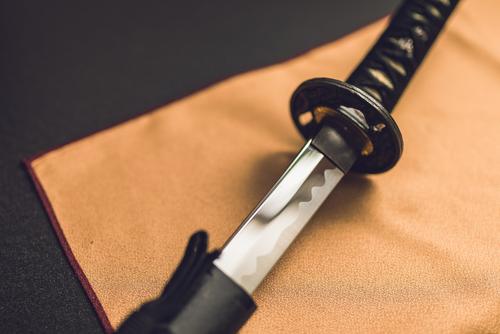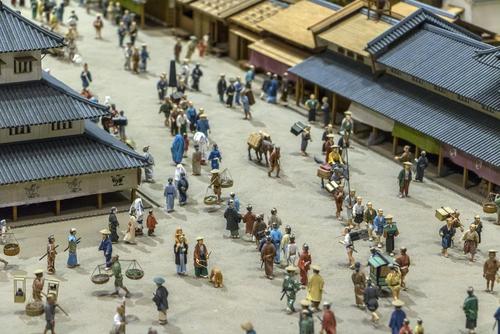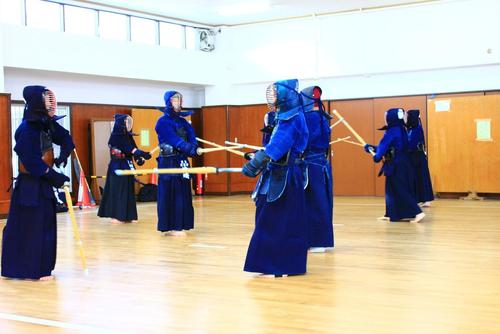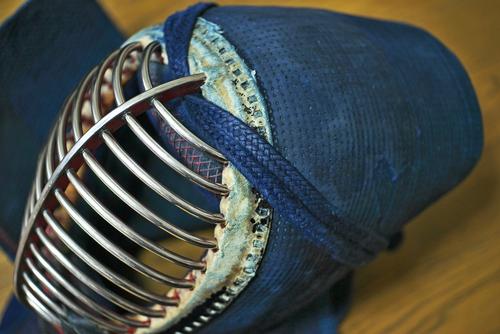Kendo has been popular in Japan for a long time. It's easy to imagine the scenes of samurai-like matches, with participants wearing gi and swinging bamboo swords, but many people probably don't know much about it beyond that.
Here, we will introduce the history, origins, and evolution of kendo, and its trajectory through each era in an easy-to-understand manner. By learning about kendo, you can deepen your understanding of ancient Japanese culture and the samurai spirit.
The origins of kendo lie in the Japanese sword

As the name kendo literally means "the way of the sword," it has a deep connection to the birth of the sword in Japan. What is the relationship between kendo and the Japanese sword, the "Japanese sword"?
The origins of kendo and its relationship with the Japanese sword
It is believed that Japanese swords began to be made over 1,200 years ago, in the middle of the Heian period. The curved shape known as a "wanto" and the high and low blade shapes known as "shinogi" are unique to Japan, and it seems that kendo gradually became popular as a way to practice how to handle Japanese swords.
The expression "shinogi wo kezuru" (to compete with one another) is still used today to describe the way samurai would slash with their swords in battle, cutting so hard that the ridge of the blade was scraped off. Kendo, which remains to this day, was developed to hone swordsmanship in a competitive manner.
Initially, it was treated as a samurai swordsmanship and fighting technique.
Originally, kendo was practiced as a martial art for samurai to learn swordsmanship so that they could handle Japanese swords in actual combat. In modern times, rather than as a martial art, the spiritual aspects of kendo, such as concentration and mental unity, are emphasized, and it is popular as a sport.
It has now spread to countries around the world, and the number of players is increasing.
Like karate and judo, the number of kendo practitioners is currently increasing worldwide. The Kendo World Championships are held every three years, and the 2018 tournament in Korea was a major event with participation from over 50 countries, including Brazil and the Netherlands.
The history of kendo, changing with the times

What meaning has kendo had in each era? Let's take a look at how it has changed over time.
Muromachi period
The latter half of the Muromachi period saw a long period of constant warfare, including the Onin War, and swordsmanship developed accordingly. Firearms were also introduced during this period. In order to protect oneself from firearms and gain an advantage in battle, equipment and swordsmanship became even more refined.
Edo period
As the turbulent times came to an end and the Edo period began, swordsmanship gradually came to be seen as a means of spiritual training for the samurai, rather than a technique used in warfare. Through the samurai spirit of frugality and the teachings of Zen, the use of bamboo swords in practice, and other techniques, it can be said that this was the period when the form of kendo as we know it today was solidified.
Meiji to Taisho era
In the Meiji era, swordsmanship temporarily declined due to laws such as the abolition of the samurai class and the prohibition of carrying swords, but the Metropolitan Police Department adopted kendo for training purposes, and in the Taisho era, kendo began to spread again for the purpose of strengthening military strength and mental training and discipline in the lead-up to the war.It was also around this time that "Bushido," a book about the samurai spirit and swordsmanship, was translated into English and became known around the world.
After World War II
Immediately after World War II, Japan was under the control of GHQ, and there was an atmosphere that it was not acceptable to openly study kendo. However, thanks to the efforts of kendo lovers, the All Japan Kendo Federation was established after independence, and the history of kendo has been preserved to the present day.
Modern Kendo is a sport and a means of mental training

Modern kendo is practiced as a means of mental training, but it has also become popular as a sport using bamboo swords.
In Japan, kendo is a compulsory subject in junior high school.
Currently, kendo is a compulsory physical education subject in Japanese junior high schools. This is likely because the value of kendo is being reassessed as part of education that trains the mind, in addition to being a sport that aims to build physical fitness. The kendo spirit of being polite and respecting one's opponent has a positive influence on character development during the impressionable school years, and also helps to instill sportsmanship.
Kendo's "attitude of valuing mental training rather than winning or losing" can be seen in other situations too.
Kendo is a sport that emphasizes etiquette, such as "beginning and ending with courtesy," as well as the moral obligation to respect one's opponent. Despite its long history and fulfilling the requirements to be a sport, the federation is reluctant to recognize kendo as an official Olympic sport. This may be because the spirit of modesty and courtesy that flows through kendo is still alive in kendo.
It is this spiritual aspect that has created so many enthusiasts around the world.
summary

Kendo has been around since ancient times as a sport, spreading as a means of transmitting the art of swordsmanship used in battle. Many people love kendo for the purpose of character development, such as the development of courtesy and mental concentration, and the number of kendo competitors is now increasing all over the world. Through kendo, we can convey to the world the culture and spirit that the Japanese have held dear since ancient times.
This article has been partially re-edited by KARUTA from an article originally published on "Nihongo Biyori."
Any unauthorized reproduction or use of the contents, text, images, illustrations, etc. of this website is strictly prohibited.
